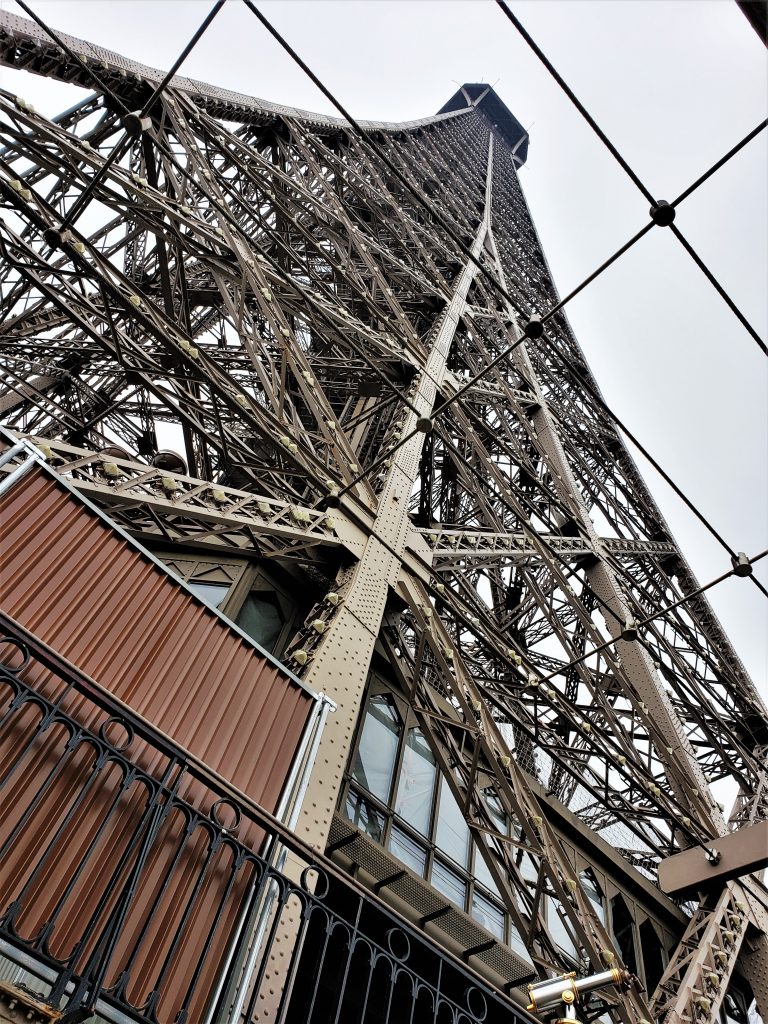
Taken in Spring of 2019. You must know what this is, right? (La Tour Eifel)
In case you missed it, all photos are by the author unless noted otherwise.)
French people speak French. That may be their worst quality, but there it is. Many don’t know more English than what they maybe gather from watching a few American movies. Which is less than you might think, buckaroo! So I’ve been studying French for a spell, and I know most of the common words, but there are specialty words that I’ve never seen. Like, for instance, where do I get Drywall Mud?
Drywall mud, properly called in the US Drywall Joint Compound, and in Canada simply Joint Compound, is called mud by professionals mainly because that’s what it closely resembles. Other than being plaster white, it could be clay scooped out of a mudpuddle. I’ve used lots of it in Nevada, especially. I even successfully replaced a kitchen wall in a small place we once owned in Arizona. Seriously, you could not tell it was a new wall, with no seams showing and all. (That may give you an idea of how much practice circumstance has forced me to take.) So, when we had the living room door moved over a few feet, I wasn’t worried. In fact, when we had the old radiators and associated pipes removed, I wasn’t worried. I simply looked up “Drywall Joint Compound” in a couple of translation apps (I always like confirmation, and they don’t always agree) I found the word remboulage. Well, remboulage is what you use to patch cracks and holes in walls. So, I headed for the Bricolage, meaning DIY, store, went to the paint department, and found some stuff called, ahem, remboulage It was soft, sort of grey, but it filled holes and so on pretty well so I filled quite a few holes in several walls with it. (The radiator project left some rather large holes.)
That stuff turns into concrete! Have you ever tried sanding concrete? There has to be something better, right? I mean, French houses do use gypsum drywall, and lots of it. Well, the man who moved the door (sounds easy, doesn’t it?) had some white stuff that stirred up just like mud. I asked him and he gave me the brand name. Cool. Back to the same brico for some of that! What they had in that brand name, in the drywall department, was plaster of Paris (Plâtre fin de Paris, to be exact.) Nothing else. Now, Plaster of Paris works as joint compound, except that it sets up in ten minutes. I ended up mixing many batches, which meant climbing up and down a ladder a lot. Good exercise, but . . . And then I ran out of plaster of Paris! So, today I went to the biggest brico in the area, looked in the paint department first, and eh, voila! there was the brand again, but this time with a box of stuff that promised to mix just like plaster of paris, give one half an hour to apply it, and be sandable after 24 hours. If you’ve ever used Mud, that looks familiar. I found MUD! As a bonus, they had some seuil, or threshold, that the other bricos didn’t seem to carry.
But, this is a post about language. The title, spelled correctly, is Parlez-vous français? You see what being unfamiliar with the language and common terms and uses for things gets you? Unnaturally rough looking spots on your wall (still a lot better than radiators and pipes) and quite a bit of bother. Of course, now, I know where to get what I need and what to call it. But I do wonder what else I’m going to have to mess up before I’m familiar enough to stop making stupid mistakes like that. Anybody? Hello?